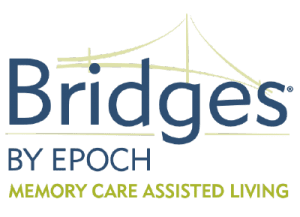Falling and the complications that come with it are some of the biggest risks for a senior’s health. They are currently the leading cause of fatal and non-fatal injuries for senior Americans, and are a huge threat to seniors’ safety, independence and economic stability. According to the CDC, one in 4 seniors fall every year, causing an overall financial toll that’s expected to top $67.7 billion by 2020.
Falls cause cuts, hip fractures and serious internal injuries that can quickly become fatal. Even when a fall doesn’t result in a serious injury, it can be such a frightening experience that it can cause seniors to avoid doing things they would otherwise enjoy because they’re afraid of falling again.
In order to help seniors maintain confidence and their independence, it’s important to create an environment where the most common causes of falls are removed as much as possible. This, of course, starts with the place you spend most of your time – your home.
Making your home safe doesn’t mean having to do an extreme makeover. In fact, making a home safe really requires just a few basic changes.
Tips for Making a Home Fall-Free
Keep your home clutter-free. The easiest way to prevent falls at home is to make sure walkways are neat and tidy. Clear out your hallways and staircases, getting rid of stacks of books or other items, and make sure that walkways are easy to navigate.
Clear paths of tripping hazards. Very often, falls are due to something that’s positioned in your way, like a potted plant, accent table or other accessory. Those things are easy to clear out of the way to make a walkway more open and accessible. Don’t forget about the things that are more difficult to see, like throw rugs that slip, uneven floorboards or loose carpet. As you’re moving things out of your path, don’t forget to find and fix home fixture issues.
Install safety devices. Handrails and grab bars can be crucial for helping seniors perform the tasks of daily living like getting on and off the toilet, getting in and out of the bathtub or going up and down the stairs. These items can be easily installed with the help of a family member or handyman. If stairs are truly an issue for you, consider looking into other alternatives such as a chair lift.
Wear clothing that fits. While loose clothing is comfortable, it can also make you more likely to fall. Make sure that pants and skirts are hemmed properly to avoid bunching or dragging on the ground. Go through your closet and make sure that your clothes are still fitting properly (this can be important if you’ve started to stoop or have lost some weight).
Brighten up your surroundings. When you can’t adequately see where you’re going, it’s a lot easier to misjudge a step and take a tumble. Install brighter lights wherever needed, particularly in hallways and stairways. Another good tip is to install night lights or floor lighting that can help you navigate at night.
Wear proper footwear, even inside. Although wearing just your socks is comfortable, it also makes it easier to slip. The solution? Wear shoes. You can opt for slippers with rubber soles, or socks that have non-slip bottoms so that you can more easily grip the flooring.
Reduce slipping hazards. Many falls occur in areas that are slippery when wet – showers, bathtubs, porches and kitchens. Invest in some non-slip mats that can help stabilize your weight and balance, even in less-than-perfect conditions.
Live on one level. As going up and down the stairs becomes more and more difficult, reduce your risk of falls by avoiding certain things – like going up and down the stairs regularly. If possible, rearrange your living space so that the majority of your life takes place on the ground level. If that’s not possible, find ways to limit the amount of times you go up and down the stairs during the day.
Reducing Risks of Falls Through Exercise
Making sure your home is as safe as possible is one way to help reduce your risk of falling. The other way is to make sure your body is as strong as possible. Building muscle tone and working on your balance will help you stay stable and strong throughout your senior years. Here are six exercises to help improve your balance and strengthen your foundation.
Alternating lunges.
Stand tall and place your feet hip distance apart. Keep your back straight and step forward with one foot, bending your front knee until your back knee is almost touching the ground. Then, straighten back up. Repeat this on each leg 5 times to begin, then increase to 10 reps when you’re comfortable. (For added support, place a sturdy chair to the side to hold.)
Leg stands.
Stand next to a wall or sturdy piece of furniture. Place your feet hip distance apart and lift your foot one inch off the floor without leaning or twisting your torso. Hold the position for 10 to 15 seconds, and then lower your leg. Repeat this on both sides for 5 reps.
Sitting to standing.
Start by sitting in a chair with arms. Brace yourself on the arms of the chair and lift your body up to standing, using as little of your lower body as possible. Then, lower yourself back into a seated position. Repeat the exercise 10 times.
Seated leg raises.
Sit in a sturdy chair and extend one leg straight out in front of you. Bring your knee towards your chest without moving your upper body. Extend your leg back to straight and lower it to the ground. Repeat on both sides for five reps.
Toe touches.
Stand up straight with your feet planted. Roll your upper body down slowly, reaching your fingers towards your toes, and go as far as you feel comfortable. Keep your legs as straight as possible. Roll slowly back up to standing. Repeat 10 times.
Fall prevention starts and ends with injury prevention, which means taking good care of your body and your home. By taking precautions, you can ensure your living environment is as safe as possible, which can help you remain independent and healthy for as long as possible.
Personalized Lifestyle
Bridges® by EPOCHs highly specialized, resident-centered Bridges® program is a positive, uplifting approach to memory care and wellness that focuses on a resident’s current skills and abilities, not on those that have been lost to dementia.
Each programming plan is as unique as the resident it serves, requiring all Bridges®team members to take an active interest in getting to know each resident on a personal level. Then, accounting for a particular resident’s preferences, interests, needs and abilities, we customize the most efficient blend of expert-recommended care, exercises, activities and communication techniques in order to connect with the individual, encourage their involvement in daily life and create happy, meaningful moments.
Intimate Environment
Bridges® by EPOCH features four distinct households, each with its own spacious common areas, along with 14 private and two companion suites. Suites feature private bathrooms and walk-in showers.
Each household has a home-like look and feel, creating an atmosphere of warmth, security and comfort for our residents and their families. While furnishings are provided, we encourage families to furnish their loved ones’ suites with favorite possessions from home to help them feel at home.
Featuring stunning residential design that complements the surrounding community, every inch of the interior is designed to benefit those with Alzheimer’s disease and memory loss. Attributes such as soft colors, directional cues, aromatherapy and interactive life stations create a soothing and secure environment where residents feel comfortable and safe.
Contact us today to learn more.


